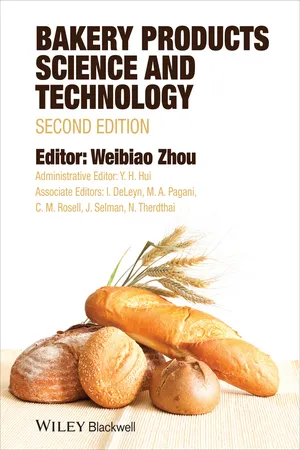
- English
- ePUB (mobile friendly)
- Available on iOS & Android
Bakery Products Science and Technology
About This Book
Baking is a process that has been practiced for centuries, and bakery products range in complexity from the simple ingredients of a plain pastry to the numerous components of a cake. While currently there are many books available aimed at food service operators, culinary art instruction and consumers, relatively few professional publications exist that cover the science and technology of baking. In this book, professionals from industry, government and academia contribute their perspectives on the state of industrial baking today.
The second edition of this successful and comprehensive overview of bakery science is revised and expanded, featuring chapters on various bread and non-bread products from around the world, as well as nutrition and packaging, processing, quality control, global bread varieties and other popular bakery products. The book is structured to follow the baking process, from the basics, flour and other ingredients, to mixing, proofing and baking.
Blending the technical aspects of baking with the latest scientific research, Bakery Products Science and Technology, Second Edition has all the finest ingredients to serve the most demanding appetites of food science professionals, researchers, and students.
Frequently asked questions
Information
Part 1
Introduction
1
Introduction to Baking and Bakery Products
Introduction
|
|
Flours
Wheat flour
Wheat flour chemistry
Rye flour
Table of contents
- Cover
- Title page
- Copyright page
- Preface to the Second Edition
- Contributors
- Part 1: Introduction
- Part 2: Flours
- Part 3: Baking Ingredients
- Part 4: Baking Science and Technology
- Part 5: Bread
- Part 6: Other Bakery Products
- Part 7: Examples of World Bakery Products
- Index
- End User License Agreement